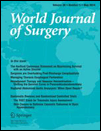The Outcomes of Percutaneous Versus Open Placement of Peritoneal Dialysis Catheters
Abstract
Background
Peritoneal dialysis catheters (PDCs) can be inserted by a percutaneous, open surgical, or laparoscopic approach. Considerable controversy surrounds the mode of catheter placement and its impact on technical success. We compared the complications and survival characteristics of PDCs that were inserted by the open approach versus those inserted percutaneously.
Methods
We reviewed the outcomes of 167 patients who received PDCs between September 2009 and February 2012. Of these, 89 were placed percutaneously and 78 were placed by open surgical techniques. The mechanical complication rates, including catheter bleeding, wrapping, migration, leakage, and technical failure of intraperitoneal placement were compared between the two groups. Additionally, peritonitis episodes, exit site infection rates, and tunnel infection rates were compared between groups.
Results
The incidence of one or more previous intra-abdominal surgeries was significantly higher in the open group (4.5 percutaneous vs 21.7 % open; P = 0.001). Although the overall number of complications did not differ between the two groups, the incidence of early mechanical complications (11.2 vs 0 %; P = 0.002) and the number of catheter removals due to mechanical complications (7.9 vs 1.3 %; P = 0.047) were higher in the percutaneous group. Of the 15 mechanical complications in the percutaneous group, one third were due to technical failures compared to none in the open group (5.6 vs 0 %; P = 0.034). The 1 year survival rate of the PDCs for the percutaneous and open groups was 89.9 and 93.3 %, respectively (P = 0.249).
Conclusions
The placement modality did not affect catheter survival. However, early mechanical complications, including technical failures, were more frequent in the percutaneous group, despite the proportion of patients with a history of one or more previous intra-abdominal surgeries being significantly lower in that group. The direct visualized open method of catheter insertion may provide the most reliable and secure access for a PDC.




